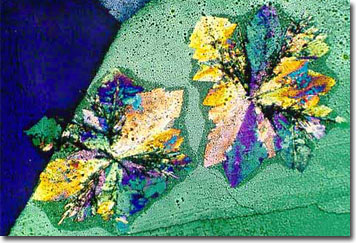Loes Modderman
Asparagine-Acetaminophen Mixture
Asparagine is one of twenty primary amino acids that occurs naturally in proteins. Traditionally, the name of an amino acid is related to its discovery, and since asparagine was first purified from asparagus juice, it was given a similar name.

Since its discovery around 1805, asparagine has held the distinction of being the first amino acid isolated from a natural source. Widely available in plants and seeds, this substance may also be found in asparagus, beets, and mangos. Other dietary sources include animal products such as dairy, beef, poultry, and eggs.
Although ordinarily obtained from a balanced diet, asparagine may be synthesized within the human body itself, and is therefore considered a nonessential amino acid. Conversely, amino acids that can only be obtained through diet are referred to as essential. Whether categorized as essential or nonessential, amino acids are the building blocks of life. As a crucial building block in major biochemical pathways, asparagine is vital for the metabolism of ammonia in the liver, and it is also required in the formation of a numerous other molecules.
A characteristic that distinguishes asparagine from other amino acids is that it possesses a relatively unreactive, neutral amide group as a side chain. This amino acid may be synthesized within the body when aspartic acid combines with adenosine tri-phosphate (ATP). Asparagine is chemically the beta-amido derivative of aspartic acid.
Interestingly, aspartic acid and asparagine are found in high concentrations in the hippocampus, which is the portion of the brain that is believed to play a major role in forming memory. In European terminology, the final letter is often dropped, and the spelling of this amino acid may often be seen in the literature as Asparagin.
Acetaminophen is a potent, non-opiate analgesic and antipyretic that is both widely prescribed, as well as sold over-the-counter. Increasingly available in different combinations to form compound analgesics, this substance is often mixed with codeine, and marketed under various trade names. In some European countries, acetaminophen is known as paracetamol.
Acetanilide, a precursor to acetaminophen, possesses significant effectiveness as a pain reliever, but it is also toxic in moderate doses. In response, chemists synthesized the compound referred to as N-acetyl-para-aminophenol, which is a compound that allows acetaminophen to attach to the enzyme that is responsible for biosynthesis of hormone-like molecules termed prostaglandins.
Acetominophen's fever-reducing and pain-relieving abilities were discovered in 1893, and the medicinal aid became available under prescription in 1956. Since 1963, the drug has been manufactured in over-the-counter forms, and it is especially popular in Britain.
BACK TO LOES MODDERMAN GALLERY
